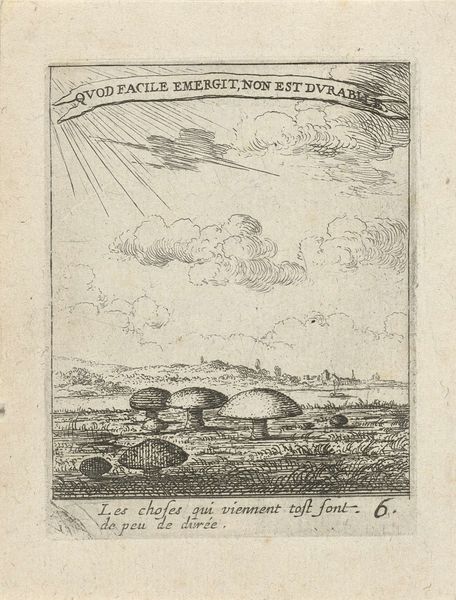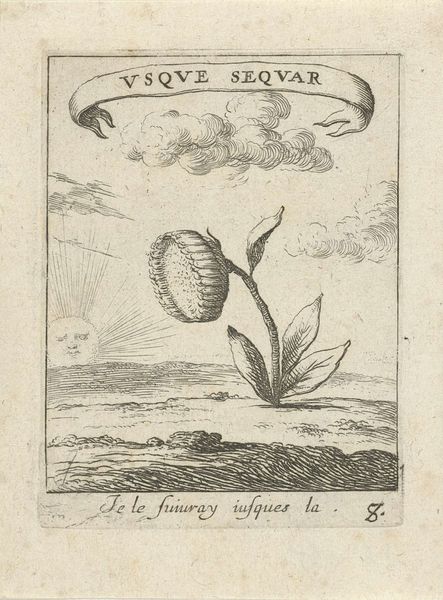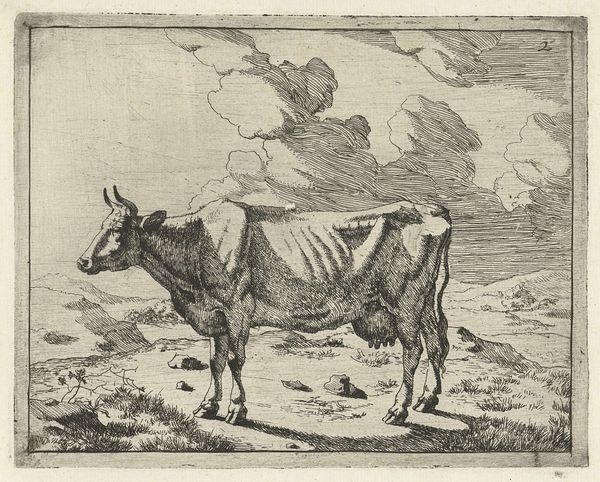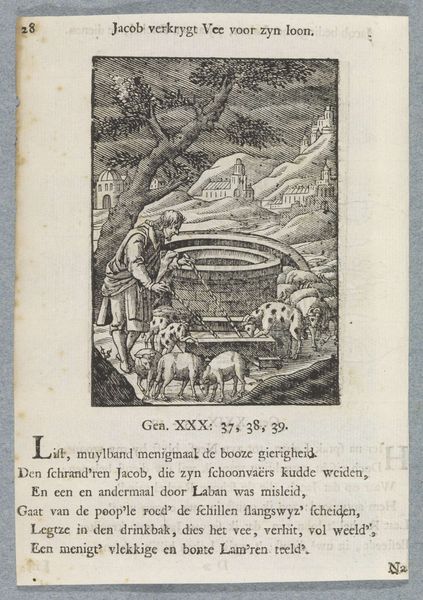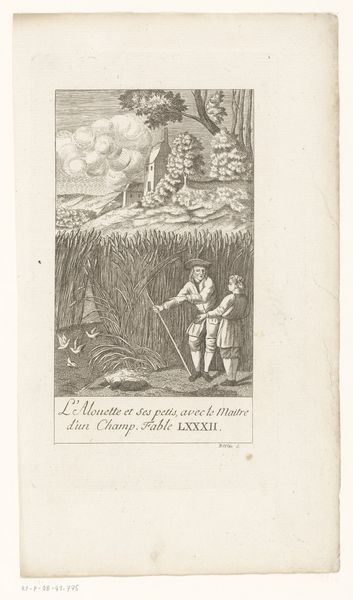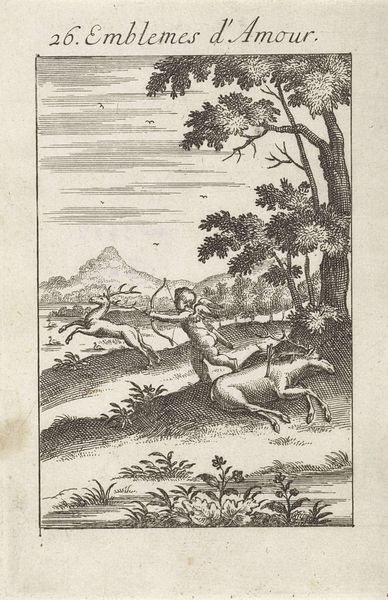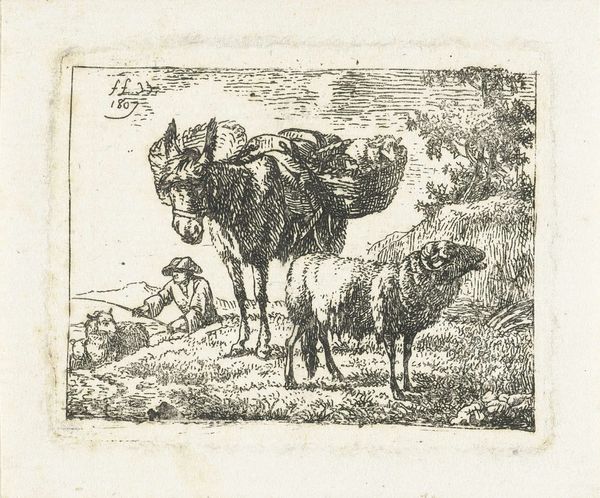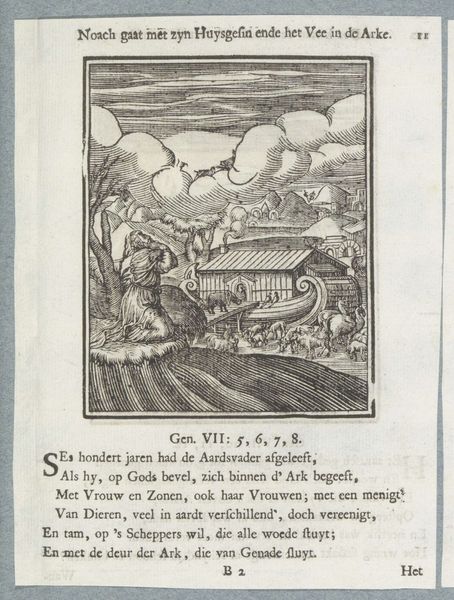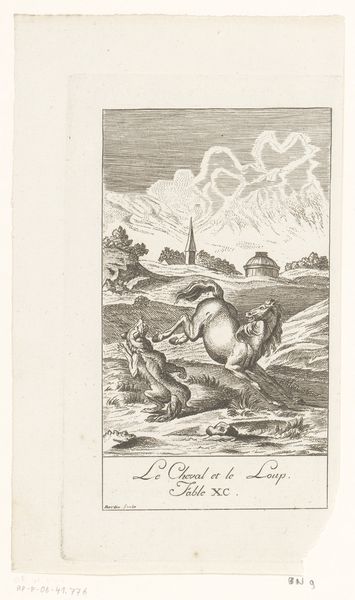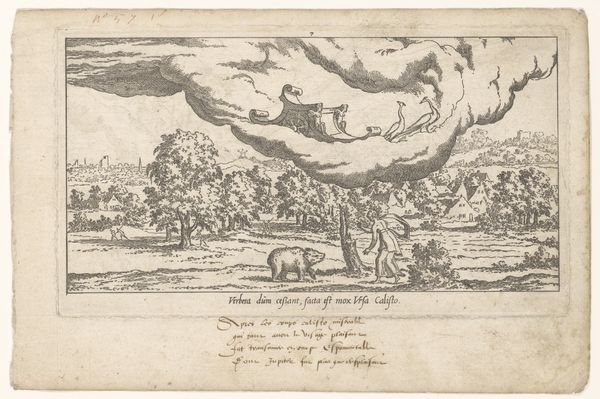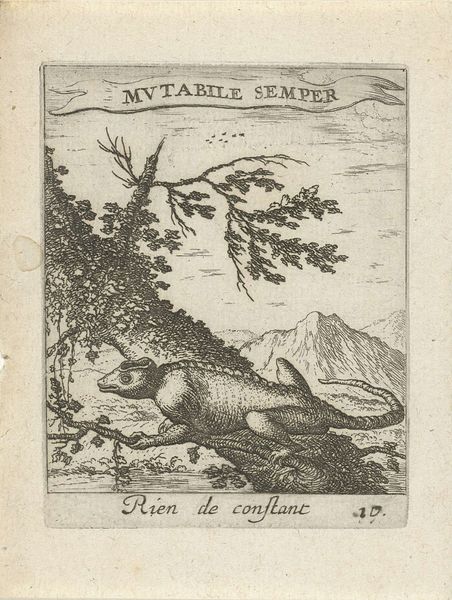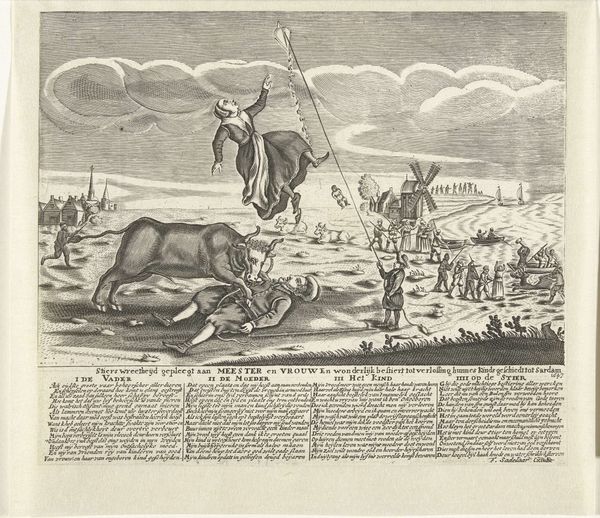
drawing, pen, engraving
#
drawing
#
aged paper
#
light pencil work
#
baroque
#
animal
#
old engraving style
#
sketch book
#
landscape
#
personal sketchbook
#
ink colored
#
pen work
#
sketchbook drawing
#
pen
#
storyboard and sketchbook work
#
sketchbook art
#
engraving
Dimensions: height 85 mm, width 67 mm
Copyright: Rijks Museum: Open Domain
Editor: This is "Liggend hert," or "Reclining Deer," an engraving and pen drawing by Albert Flamen, created around 1672. There's a somberness to this animal lying down amidst the landscape. It feels both vulnerable and observant. What do you see in this piece, considering its historical context? Curator: I see a reflection of shifting attitudes towards nature and its representation within the elite circles of the 17th century. Prints like this, circulated among collectors and naturalists, served a crucial role in shaping how people understood and interacted with the natural world. The deer, depicted not as a hunting trophy, but in a moment of repose, hints at a growing awareness of the animal's intrinsic value, separate from human use. But is this concern born of empathy, or simply a fashionable trend within aristocratic collecting practices? Editor: That's an interesting question! The positioning of the text above and below the image does seem to add another dimension. Curator: Absolutely. Notice also the contrast between the detailed depiction of the deer and the somewhat generalized landscape surrounding it. This draws attention to the animal as an individual, while the backdrop speaks to its environment. We might consider how Flamen’s prints fit within the broader development of natural history as a discipline. The accuracy was clearly prioritized and highly valued. Editor: So, its value lies as much in its contribution to a growing field of knowledge, as in its aesthetic qualities? Curator: Precisely! And by disseminating knowledge of the animal kingdom, artwork such as this helped shape public perception of our impact on, and responsibility to, it. Editor: This makes me rethink what seems at first glance like a simple pastoral scene. I appreciate how considering the broader culture adds so many dimensions to its meaning. Curator: Exactly! And the story doesn't end in 1672. The history of an artwork includes its continued interpretation and impact, even today.
Comments
No comments
Be the first to comment and join the conversation on the ultimate creative platform.
